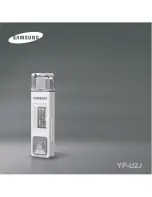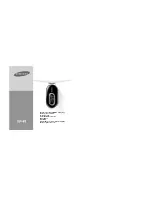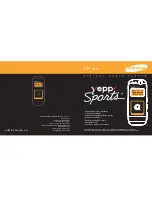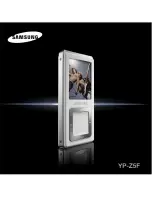
Like Cambridge Audio’s previous Azur 751BD Blu-ray Disc
™
player reviewed in Issue 162, December 2011, the Azur 752BD is
based on the same Mediatech chip-set used in OPPO disc play-
ers. Also, like the 751BD, the 752BD is distinctly different than
OPPO players in numerous ways. The circuit boards themselves
are clearly unique to Cambridge, being laid out differently, labeled
with Cambridge identification, and are blue in color. The main
board contains the large integrated circuit carrying the Anagram
DSP-based, ten-channel 24/192 upsampling chip that is not pres-
ent in OPPO disc players. The digital audio architecture of the
752BD upconverts all digital signals to 24/192 before conversion
to analog. Additionally, the Anagram upsampling DSP will upcon-
vert digital outputs to 96 or 192 kHz sample rates if you select
PCM output mode, which you really should be using to allow
access to secondary audio features on Blu-ray Discs. There is no
advantage to sending undecoded codecs (aka bitstream) like
Dolby TrueHD or DTS-HD MA to your surround processor. Doing
so prevents you from being able to access secondary audio from
Blu-ray Discs.
The Azur 752BD is Cambridge’s top-of-the-line Blu-ray Disc
player. If you will not use or benefit from the analog outputs or
high-quality upsampling, there is Cambridge’s lower-cost disc
player (currently the 651BD, but you might expect a 652BD at
some point). The 752BD uses five onboard Wolfson DACs for all
digital to analog conversion. Since each DAC is a stereo chip,
that means there are 10 channels of analog-to-digital conversion
onboard. Eight channels (four DACs) are used for the analog mul-
tichannel outputs, and a dedicated left and right output share the
fifth Wolfson DAC. The OPPO BDP-105 uses ESS Sabre DACs
and employs unspecified upsampling. Cambridge chose
Anagram upsampling for the 752BD, presumably because they
felt the end result was better than other options available to them.
Cambridge also includes a choice of three digital filters designed
by Anagram. The digital filter is one of the sources of sonic differ-
ences among different digital audio products. These digital filters
have different properties, none of which are perfect, but each
option has pluses and minuses in regards to measured response to
various input stimuli like impulses, simultaneous tones, etc. Since dif-
ferent people react differently to different digital filters, Cambridge
included three choices that can be selected by a direct-access button
on the remote control. Three tiny blue LEDs on the front panel indicate
which filter is in use, but you cannot determine the active filter from
your seat unless you cycle through the three choices to learn which
LED of the three is illuminated. These filters only apply to analog audio
outputs. If you are using digital outputs, digital audio is sent directly
and not filtered until it gets to the surround processor or AVR and then
it will use the filter in the processor or AVR.
If you take a high-level look, the Azur 752BD and OPPO BDP-105
have a similar list of features, though, the Cambridge player lacks the
105’s USB DAC input and the headphone jack. But the OPPO machine
lacks the Anagram upsampling and the three selectable digital filters.
Both machines are designed for analog audio performance beyond
“standard” Blu-ray Disc players. OPPO and Cambridge did their thing
in different ways, and you may have a preference for one machine over
the other.
Some of the key features of the 752BD are: faster disc loading and
faster response to commands from the remote control; 4K upsampling
(not a needed feature yet, but perhaps some day a 4K display will
exist that doesn’t do a very good job of converting HD to UHD); two
HDMI inputs; three USB inputs; digital coax and optical inputs; no
video outputs except HDMI and a diagnostic composite video connec-
tion; dual HDMI outputs with Marvell Qdeo processing for HDMI1 only;
universal disc playing capability (HDCD, CD, DVD, DVD-A, SA-CD,
Blu-ray including 3D, Picture CD, and many writable or read-writable
disc types); 2D to 3D conversion (no better or worse than other imple-
mentations); can be used as a “preamp” to feed multiple amplifier
channels without an AVR or surround processor; front HDMI input is
MHL compliant; included USB Wi-Fi adapter with USB extension cable
to improve placement options to get best possible performance; net-
work media support; and internet apps for YouTube and Picasa. In
other respects, the 752BD has features similar to other current Blu-ray
Disc players.
Doug Blackburn
Blu-ray Disc
™
Player
Cambridge Audio Azur752BD
Widescreen Review • Issue 175 • March 2013
1
1/4






















